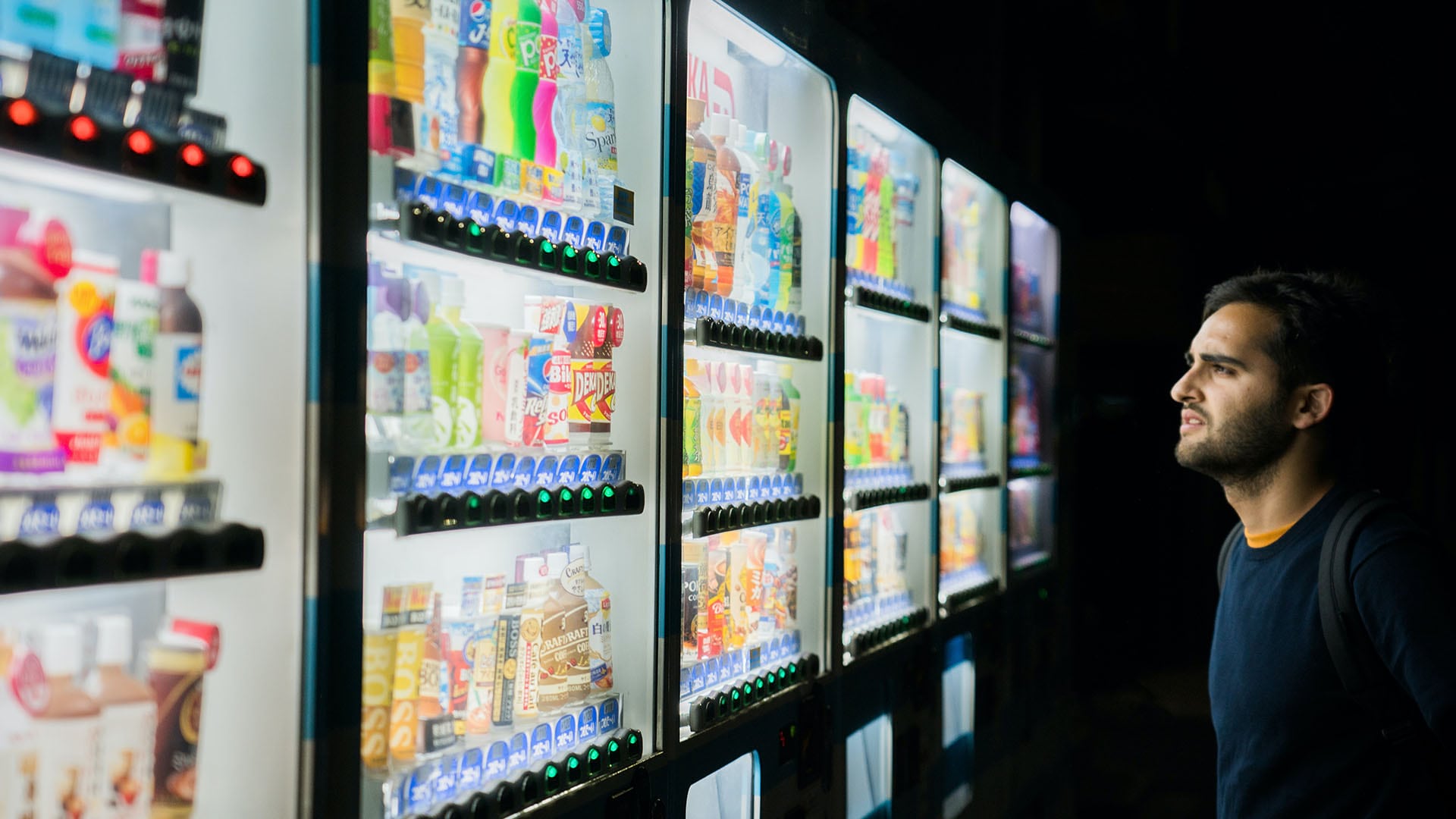Crisis is often a catalyst for creativity, and the COVID-19 pandemic has driven innovations in vaccines, telehealth, 3D printing—even pop-up dining domes.
Here’s one area few might have expected to become a locus of disruption: vending machines. In countries like Japan, vending machines are cutting-edge contraptions, but in the US, these standbys of office breakrooms and hospital lobbies have typically offered nothing more interesting than a granola bar or can of soda. But at a time when consumers continue to seek out safe, hygienic, contactless ways to shop, vending machines are showing up in unexpected places, getting smarter, and offering a surprising menu of products.
A vending machine in New York City is selling at-home COVID-19 tests for $149 each, making it easy for business travelers and others to check their status. A company named Piestro wants to make it possible to use facial recognition technology to buy fresh-made pizza from an autonomous machine. One of the country’s biggest travel retailers, Hudson Group, began selling PPE via touch screen machines in airports across the country, while Fairfield Inn & Suites plans to offer breakfast items for guests via wall-to-wall kiosks.
The ability to track the performance of smart vending machines through data analytics and a geographic information system (GIS) is opening new ways to penetrate markets and creatively expand these direct-to-consumer networks. Just as companies use GIS to optimize the location of stores and analyze sales in specific markets, location intelligence could pinpoint the ideal placement of vending machines down to the block level in cities and towns, or the floor level within a building.
Vending Machine Site Selection Goes High Tech
Companies can use GIS to analyze patterns in human weather, illuminating potential shoppers in places where traditional stores or even pop-up units can’t reach. Smart maps might reveal commercial potential at remote rest stops or along suburban public transportation routes. A vending machine’s owner could track the performance of each machine in real time via a GIS dashboard and incorporate the demographic and psychographic mix of passersby into decisions about which products to offer. Brands might also place the machines in locations that attract tastemakers as a way to pilot the potential of new products.
Indoor environments like offices present another opportunity for location-smart vending machines. Using the indoor location intelligence of GIS, companies could do as Facebook did and replace locked office supply closets with strategically located vending machines featuring keyboards, power cords, or screen wipes free of charge. A dashboard of usage trends can show whether units are placed in ideal locations.
The use of data in vending machines of all sorts is already taking off. Bevi, a “smart” water cooler, is ousting traditional beverage-dispensing vending machines in many offices by capitalizing on the trend for flavored sparkling water in a sustainable way. Users select their desired type of water (still, sparkling, flavored) via a digital interface that prompts a spigot to fill a customer’s cup of choice, cutting down on one-use plastics. The company relies on data analytics to automatically monitor when flavors are getting low, and can also track which flavors are more popular in certain geographic regions, getting ahead of trends.
Meanwhile, companies like PopCom are pioneering the new space of digital pop-up shop technology that could serve to widen brands’ omnichannel strategies. PopCom’s kiosks can accommodate any number of products you’d typically find in a store, and do so via data-rich engagements with users. The machines can capture information on inventory and sales, as well as advanced metrics such as nearby foot traffic, dwell time at the machines, and anonymized stats on demographics like gender and age.
A New Source of Insight on the IoT
These and other novel vending machines essentially act like nodes in an Internet of Things network, offering services and products while gathering information about usage and the surrounding environment. Location-savvy companies already use GIS to organize data from stores. Now they can incorporate insight from vending machines and pop-up shops to round out the portrait of a geographic market: who shops where, at what times, and how such patterns break down by demographic segments or other variables like seasonality.
Because of their low overhead and maintenance needs, such machines could even operate as trend scouts, allowing a brand to try out new products and gather preliminary data on what proves most popular.
Thanks to their ability to absorb data and cater to mobile shoppers, more smart vending machines might be coming to a pedestrian mall or office atrium near you, and the location intelligence they produce could shape retail practices for years to come.











